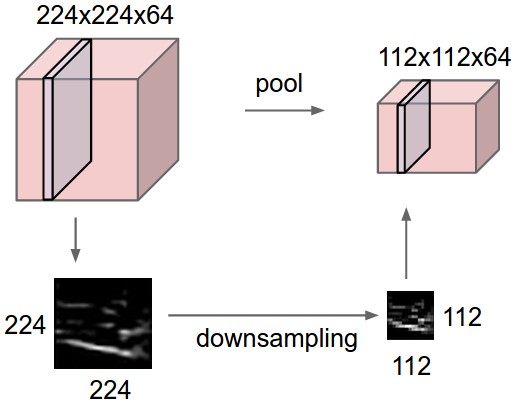Max Pooling - rugbyprof/5443-Data-Mining GitHub Wiki
A pooling operations typically used in Convolutional Neural Networks. A max-pooling layer selects the maximum value from a patch of features. Just like a convolutional layer, pooling layers are parameterized by a window (patch) size and stride size. For example, we may slide a window of size 2×2 over a 10×10 feature matrix using stride size 2, selecting the max across all 4 values within each window, resulting in a new 5×5 feature matrix. Pooling layers help to reduce the dimensionality of a representation by keeping only the most salient information, and in the case of image inputs, they provide basic invariance to translation (the same maximum values will be selected even if the image is shifted by a few pixels). Pooling layers are typically inserted between successive convolutional layers.
It is common to periodically insert a Pooling layer in-between successive Conv layers in a ConvNet architecture. Its function is to progressively reduce the spatial size of the representation to reduce the amount of parameters and computation in the network, and hence to also control overfitting. The Pooling Layer operates independently on every depth slice of the input and resizes it spatially, using the MAX operation. The most common form is a pooling layer with filters of size 2x2 applied with a stride of 2 downsamples every depth slice in the input by 2 along both width and height, discarding 75% of the activations. Every MAX operation would in this case be taking a max over 4 numbers (little 2x2 region in some depth slice).
